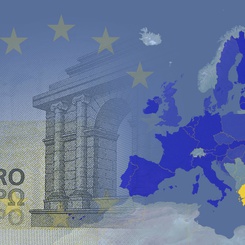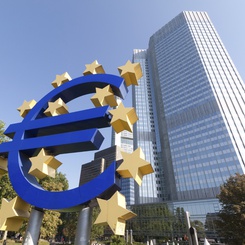With Marc Guyot
French President François Hollande took journalists by surprise at a January 14th Press Conference with his “coming out” as a believer in supply side economics, an economic strand of thought whose most famous proponents in the political sphere were Ronald Reagan and Margaret Thatcher and to some extent Tony Blair and Gerhard Schroeder, as well as Milton Friedman, in the small world of professional economists.
These ideas have a long tradition: French economist Jean-Baptiste Say summed it up as “supply does create its own demand” at the beginning of the 19th Century. Is François Hollande a new convert to the philosophy?
Most representative of François Hollande’s new credo is a new policy, called the “Responsibility Pact”. The Government will reduce taxes on companies by 30 billion Euros (1.4% of French GDP), provided that firms commit to creating jobs (the numbers are not yet settled, but some speak of 1 million jobs over 5 years). A National Observatory should be created to supervise the execution of the deal.
One can think that any gift to firms under the form of a decrease in taxes is a supply side reform. Yet President Hollande’s administrative bargain – put it simply: “I reduce taxes if you hire people” – is miles away from the general philosophy of supply side economics. Asking for counterparts for every single step favorable to firms actually makes the firm playing ground more hostile, it adds complexity and confusion. When the same government introduced in January 2013 a first corporate tax credit (the “CICE”), many companies got so afraid of the complexity of the application process, that they did not claim the tax cut.
The key ingredient of the supply side approach is a “hands-off Government”. The latter should not directly intervene in the micro-management of the private sector. Quite the opposite, it must take all the steps needed to create a business friendly environment, by suppressing bureaucratic constraints on markets and firms, by supporting input and output price flexibility, by protecting competition, contracts and private property. This can be done only within a transparent and stable regulatory framework, and a sound macroeconomic environment, with stable prices and a rigorous fiscal policy.
The consequence of a business supportive environment is an increase in both employment and labor productivity, the two key factors of economic growth. When firms recover their “right-to-manage”, they start hiring and investing. Higher investment increases the capital per worker, and thus raises the contribution of every worker to the productive process. Under strong but healthy competition firms have all the incentives to innovate, thus further fostering productivity.
Supply side economics is consistent with a strong social security network and smart redistributive policies; it does not require substantial income inequality. However, supply side economics considers that a small Government is better than a big Government. If there are many public goods that should be supplied by the Government, such as a well functioning judicial system or the provision of defense, many activities such as higher education, or advanced research can be transferred to the private sector.
Supply side economics respects the environment and would enforce strong environmental protection laws. As for the unemployed, supply side economics has nothing to say against a generous unemployment benefit system, provided that efficient activation policies are also implemented. It considers that the best protection for employees is provided by a low unemployment rate, itself to be the outcome of a flexible labor market. Symmetrically, it considers that the best protection for consumers is provided by strong competition among firms.
If President Hollande is serious about becoming a supply side policymaker, here are some modest suggestions for putting actions in line with words:
- In order to help firms to survive in a tough global environment, make sure that they can adjust costs when needed. To do this, the key element is to make sure that wage increases do not exceed productivity gains. This can be achieved through a deregulation of the labor market, which will enable wage to become flexible. More precisely, in crisis times wages should not rise and even decline. Firms should also be able to dismiss redundant workers.
- To help firms create jobs, don’t prevent them to fire redundant persons; To do this, give up the constraints and absurd legal procedures on the “economic motive” for firing, and create a single labor contract, by abolishing the difference between temporary and “open-ended” contracts.
- Scrap recent regulation of partial working time imposing minimum 24 h/week. Most of partial time is done by people who need a small number of work hours (students, poor people who already have a job, mothers taking care of children, etc.).
- Simplify labor legislation. 1200 pages are much too much.
- Differentiate the minimum wage by branch and workers’ age.
- If you want unions to care about unemployment, make unemployed person union members. Then move the annual wage negotiation at branch or national level.
- Give up requiring a state degree or certification for jobs that really do not need one.
- Reduce the upper marginal income tax rate; dissuading a nuclear engineer to do extra hours will not prompt firms to hire more unqualified workers.
- Monitor monopolies, oligopolies, and chase all abuses of market power. In particular, make sure that abuses of market power don’t happen in banking, utilities, retail trade. Privatize companies that would be more efficient under private ownership (i.e. most of them). Open all protected markets to competition.
- Allow companies that need to go bust to go bust, even if they are outdated “national champions”.
- The government can help companies to reduce unit labor costs by reducing corporate taxes on profit and labor. The risk with company tax cuts is that they need to be financed. This can be done by raising other taxes such as the VAT or by spending less. Keep in mind that imposing taxes on consumption could reduce consumption, with perverse effects on firms. True, it harms national firms and imports in an equivalent way.
- Reducing public spending is the most interesting solution. Not all public spending is good. Make sure that the public sector does not create its own reason to exist. Some state officials work on drafting many pages of regulations, which create such a confusion that will call for further regulation.
- International and national investors might well end up doubting about the ability of the French government to manage the very large public debt (90% of GDP and rising). The going fiscal rigor should be fostered. Further efforts should be done to balance the pension system.
The unpleasant thing with the transition from administrative to supply side economics is that all reforms should be implemented together. Will President Hollande have the political courage to let supply side economics have a further influence on his policies? Only time will tell.









